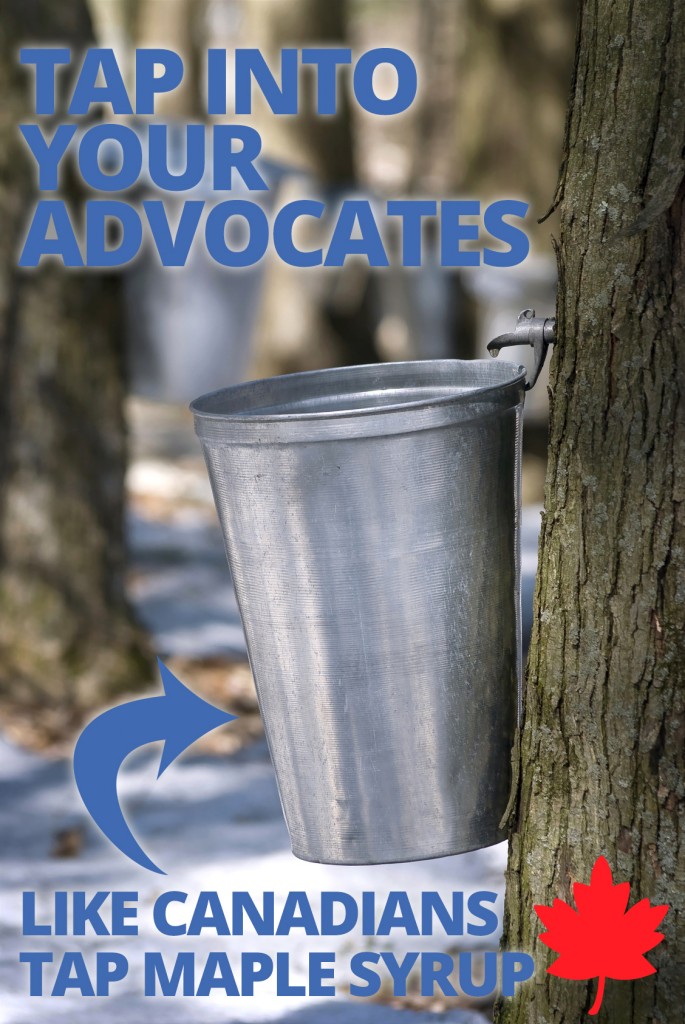This past week I joined more than 100 customer reference and advocacy professionals at the Summit on Customer Engagement in the Bay Area. I was there to learn as well as share what I've experienced with our customers at Influitive. The theme of the conference was to go broader when it comes to reference management and advocacy - to get to "the other 90%". While I came away from the conference with many great ideas and met some incredible marketers, my feeling is that most B2B organizations are not even close to leveraging all that their advocates have to offer.
It was kicked off by Megan Heuer from the B2B think tank SiriusDecisions. She quickly threw down the hammer and set the bar very high for everyone that followed her.
What is the issue here? Why is this transformation so slow? I believe that the traditional focus on references alone is partially responsible for this. Reference management is still important in the sales process but it's not as relevant as it once was. References and the reference content that sales uses is mostly used lower down in the sales funnel. Customer advocacy can be used for all aspects of the sales funnel and can even extend to post purchase phase (but that's another post).
Here are a few of my observations from the conference:
I witnessed a similar transformation from my former trailblazing days at Eloqua. Marketers slowly moved from email marketing to a more comprehensive marketing automation mindset. It wasn't pretty and many companies went kicking and screaming but modern marketing prevailed. The companies that innovated the fastest beat out their competitors. The same will happen in advocate marketing as organizations strive to maximize their marketing budgets and shift their focus on retaining and growing their customers. You will need to decide if you want to get ahead of the curve or be left behind.
Read more >>
It was kicked off by Megan Heuer from the B2B think tank SiriusDecisions. She quickly threw down the hammer and set the bar very high for everyone that followed her.
via @megheuer "Customer advocacy is the future of marketing" #amen #2014sce
— Chad Horenfeldt (@ChadTev) February 25, 2014
"Customer advocacy is your unfair competitive advantage" -@megheuer, Sirius Decisions #2014SCE
— Claire Grove (@ReferenceQueen) February 25, 2014
BAM! She had the attention of everyone in that room and then proceeded to show examples of how modern advocate marketers such as Colt Technologies, Citrix, DocuSign and Progress Software were leveraging their advocates to help with marketing and sales efforts. We were off to a great start.
Megan had a number of significant points for attendees: make it easy for customers to tell their stories and not to focus on yours, align your company around advocacy to maximize its benefits, and ensure that you can measure the impact of advocacy on core business objectives (see more here).
At the end of her talk she mentioned something else that seemed obvious but wasn't:
As the conference continued, Wendy S. Lea, the Executive Chair at GetSatisfaction had additional points to add on customer advocacy:
A great example was from Carlos Gonzales from Ceridian who presented at the conference. He quickly demonstrated that Ceridan was "all in" when it came to advocacy and their Ceridian XOXO program is the result. As Carlos was presenting, someone in the audience put their hand up asking for clarification on a number that Carlos just mentioned: "It's 750 advocates who have done some sort of advocacy activity for us in the last year" explained Carlos. That had heads turning. Carlos and the team at Ceridian had built a program that was specifically focused on getting to that other 90% and was leveraging technology to get there (more details here).
Megan had a number of significant points for attendees: make it easy for customers to tell their stories and not to focus on yours, align your company around advocacy to maximize its benefits, and ensure that you can measure the impact of advocacy on core business objectives (see more here).
At the end of her talk she mentioned something else that seemed obvious but wasn't:
Attn: marketers: You need technology to help with advocacy so you can focus on the higher objectives #2014sce
— Chad Horenfeldt (@ChadTev) February 25, 2014
Not only was it interesting what Megan was saying, it was also what she wasn't saying. She didn't emphasize references and hardly mentioned it at all. She looked at advocacy from a much broader sense. She focused on the theme of the conference which was to get to the other 90% by providing examples and a clear path to get there. She even went beyond customer advocates and briefly outlined how Progress Software empowers its partners as advocates - another trend that I'm seeing with marketers I work with.Think of Advocacy in Terms of the Majority of Your Customers
As the conference continued, Wendy S. Lea, the Executive Chair at GetSatisfaction had additional points to add on customer advocacy:
Only companies that aren't afraid to engage with customers reap the rewards. You're customers are in control. Put fear aside. #2014sce
— Liz Richardson (@LizRichardson1) February 25, 2014
Many organizations are only focusing on a small segment of their top customers when it comes to advocacy as it's perceived that is something that should be controlled. Why should you only focus on such a small number of customers? There were a number of examples from Citrix, Apptio and Box that were making this transformation to leverage the technology that exists.A great example was from Carlos Gonzales from Ceridian who presented at the conference. He quickly demonstrated that Ceridan was "all in" when it came to advocacy and their Ceridian XOXO program is the result. As Carlos was presenting, someone in the audience put their hand up asking for clarification on a number that Carlos just mentioned: "It's 750 advocates who have done some sort of advocacy activity for us in the last year" explained Carlos. That had heads turning. Carlos and the team at Ceridian had built a program that was specifically focused on getting to that other 90% and was leveraging technology to get there (more details here).
Reference Management is Not Advocacy in Itself
Here are a few of my observations from the conference:
- in Megan Heuer's post on the SiriusDecisions blog she defined customer advocacy as a strategic advantage and something that goes well beyond a reference program. She included social sharing as a key aspect of advocacy. However, what struck me at the Summit was how little social sharing was happening amongst the attendees with the exception of a few. This was in sharp contrast to the many other B2B marketing conferences I've attended. To take advantage of social media, those that run advocate marketing programs need to understand its importance and capabilities.
- The metrics for those marketers that attended the conference were still mostly centered around references. Because advocate marketing can be involved much more broadly in organizations, it can also assist with social reach, lead generation (referrals) and overall customer satisfaction. Advocacy programs need to incorporate these areas and much more.
I witnessed a similar transformation from my former trailblazing days at Eloqua. Marketers slowly moved from email marketing to a more comprehensive marketing automation mindset. It wasn't pretty and many companies went kicking and screaming but modern marketing prevailed. The companies that innovated the fastest beat out their competitors. The same will happen in advocate marketing as organizations strive to maximize their marketing budgets and shift their focus on retaining and growing their customers. You will need to decide if you want to get ahead of the curve or be left behind.
Chad H.
.jpeg)







